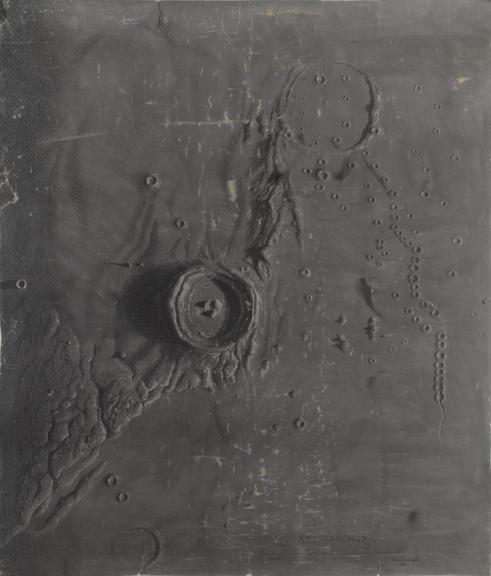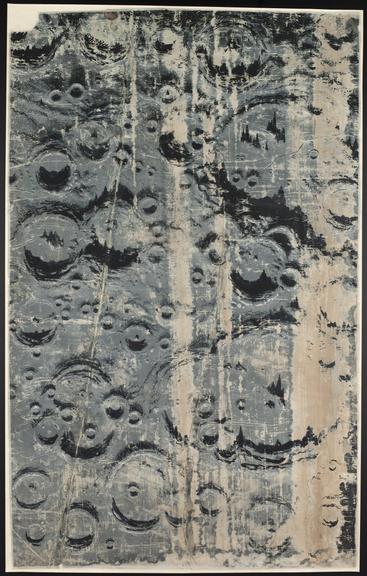Moon: Tycho and Maurolycus
1851





Paintings by James Nasmyth of different parts of the surface of the Moon. 1849-1851. 8 paintings; distemper, on paper laid to canvas; various sizes, 210x200cm or smaller. - A series of technical paintings presenting an almost photographic delineation of sections of the surface of the Moon, as viewed by Nasmyth through his telescope at Penshurst, Kent (inv.1933-21). - Each fitted, dated and signed by Nasmyth; some titled; with scale measurements. Exhibited at the Great Exhibition 1851, clas 10 number 688 (prize medal). - Used to make models of moon sections, lighted and photographed to emphasise what the human eye sees as areas or layers of dark on surface. - For details see 1956-153/1 to /8
James Nasmyth started observing the moon in the 1840s, while running a revolutionary engineering business in Manchester. He tried to use the most up-to-date lunar map published by German astronomers but found the two-dimensional line drawing did not equate easily with the three-dimensional surface he observed. He therefore produced a series of sketches and paintings, from hundreds of observations, focusing on the light and shadow created by the moon’s pitted surface.




